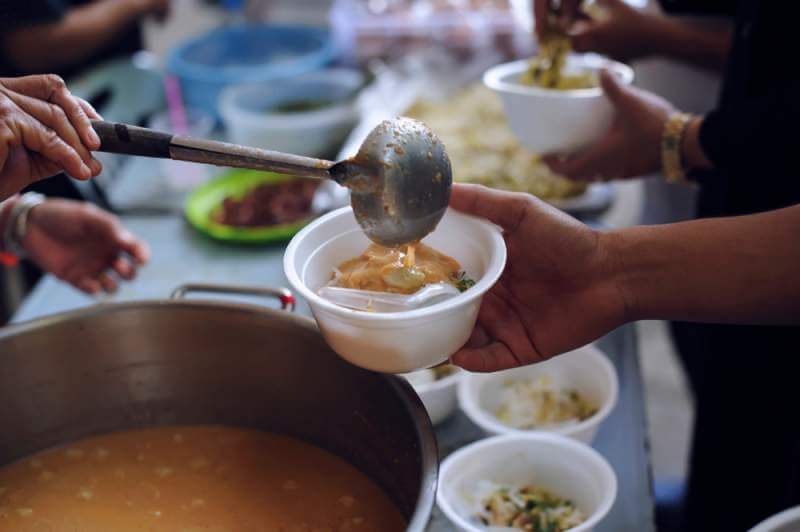Food poverty, while the term suggests a lack of food, it is much more involved and covers all aspects of receiving a healthy, balanced diet. For instance, obesity, while not often considered a poverty factor, is more likely to occur in low-income households where the cost of healthy and nutritious food is out of reach for those trying to ensure they have a roof over their children’s heads and remain warm during the cold winter months. Food poverty doesn’t just affect those on low incomes, although they are the largest majority affected but can also be felt by;
- People working extremely long hours leaving little time to prepare healthy meals
- Elderly in need of support for preparing quality food
- Poorly educated individuals who do not understand the importance of a balanced diet
The Department of Health in the UK defines food poverty as “the inability to afford, or to have access to, food to make up a healthy diet.” Of those affected by food poverty, it isn’t simply the reality of going to bed hungry but without receiving the essential vitamins and minerals needed, it can cause long-lasting ill-health affects and even cause complicated relationships with food and diet, particularly in children.
There are many charities in the UK and abroad that are dedicated to providing nutritious food packages to those affected by food poverty or have found themselves in food poverty due to surrounding conflict or natural disaster. In particular, Islamic charities run numerous campaigns around the festival of Qurbani and provide high quality meat to those who would otherwise go without. You can read more about the festival and rules of Qurbani here.
Why Does Food Poverty Happen?

Food poverty isn’t something that people can necessarily prepare for and can occur at any time due to negative personal or financial circumstances. For example, for a household of 4, two adults and two children with a stay at home parent and one parent that goes out to work, it is very easy to find themselves suffering food poverty should the breadwinner lose their job. Especially in the current economic climate where it seems that large, established businesses are failing into administration every week and jobs are harder to come by with more people competing for each available role.
Luckily, it is much easier to reduce the impact of food poverty by ensuring there are food banks and funding available to educate and inform families on cheap, healthy meals that aren’t over complicated to cook and offer that all-important nutritional value. Food packs can be put together that cover the essentials, such as meats rich in protein including lean beef, chicken breast and fresh tuna, supplemented by fresh vegetables and fruit that provide antioxidants and energising B vitamins. However, the responsibility shouldn’t fall to charities and food banks alone. Citizens everywhere should be encouraging their governments to face the reality of food poverty and how widespread it occurs. With enough encouragement, governments could provide necessary funding to help people be more prepared for potential financial hardships and educate families on cooking healthier, balanced meals without spending a huge amount of time or money.
Preventing Food Poverty
 Preventing food poverty is a long-road and we are probably still decades away from ensuring that no individual ever has to go to bed hungry out of no choice. Education needs to start in schools, talking about the importance of financial planning and saving emergency funds. Especially in the modern job market, where it can be weeks, leading into months between losing a job and finding a new one.
Preventing food poverty is a long-road and we are probably still decades away from ensuring that no individual ever has to go to bed hungry out of no choice. Education needs to start in schools, talking about the importance of financial planning and saving emergency funds. Especially in the modern job market, where it can be weeks, leading into months between losing a job and finding a new one.
Ensure that families and children are aware of resources to help those that fall below the poverty line and that negative food habits are stopped before they create a long-term effect. This is particularly apparent in young adults and students living by themselves for the first time and will often see them eating lots of junk food and hoarding food due to the insecurity previously felt when they did know where or when their next meal would be coming from. This begins a routine of unhealthy eating which affects weight, energy levels and also has a knock-on effect on stability of emotional and mental health.
Easy, Healthy and Cost-Effective Recipes
 Eating well doesn’t and shouldn’t cost a lot of money and there are plenty of easy meals to prepare at home that the whole family will enjoy, including;
Eating well doesn’t and shouldn’t cost a lot of money and there are plenty of easy meals to prepare at home that the whole family will enjoy, including;
Delicious Tomato Risotto
Perfect for a cold winter’s day, this creamy and delicious tomato risotto dish can be easily prepared using your favourite tomato variety and tasty herbs such as basil and rosemary. It’s a quick meal to prepare and can even be put in a container to take to work for lunches. The linked recipe takes less than an hour to prepare and feeds up to four people.
Spaghetti Carbonara
A classic Italian favourite, spaghetti carbonara is a delicious meal that can be changed depending on your preference of meats. Prepare with chunks of chicken breast or cut up some pancetta ham or bacon to sprinkle on top. Leftovers can be used for lunchtime, although this recipe is so popular, you might be fighting over seconds!
Tex-Mex Meatballs
A tasty dish that you can add your level of preferred spice to. This recipe can be prepared in less than an hour and provides enough food to comfortably feed two people, or can be used alongside rice or in a freshly baked sub base to feed up to four. Make the recipe your own with your choice of chilli peppers, birdseye and scotch bonnets are a fruity popular choice.
Food is a necessity to life, without it we wouldn’t be able to function on a day to day basis but it doesn’t have to be expensive or boring. Explore the recipe websites above for more cheap, healthy meal inspiration and get your kids involved, picking meals, shopping for ingredients together and cooking together. It’s a great way to encourage family bonding and families can use the opportunity to learn more about preparing cost-effective meals that are both delicious and nutritious.





